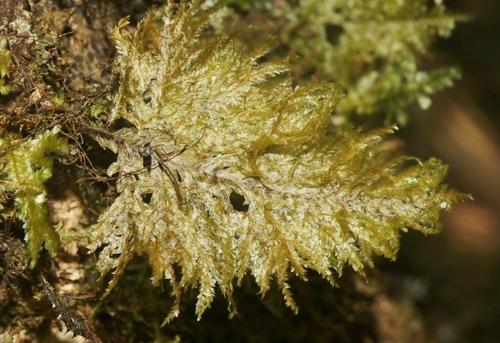
6896176628_fb25bda74b_b.jpg from: https://www.bbg.org/news/in_search_of_andreaea
Exploring the Fascinating World of Andreaea javanica J.Froehl. Moss
Andreaea javanica J.Froehl. is a unique and intriguing species of moss belonging to the Andreaeaceae family, commonly referred to as Andreaea. This tiny but mighty plant plays a significant role in its native ecosystems. In this blog post, we’ll dive into the captivating world of Andreaea javanica and discover what makes it so special.
Background on Andreaea Mosses
The Andreaeaceae family, part of the Andreaeopsida

99593_orig_1.jpg from: https://idfg.idaho.gov/species/taxa/189
class within the Bryophyta division, is known for its distinct characteristics. Andreaea mosses are typically found growing on rocks in cold, mountainous regions around the world. They are considered to be one of the most primitive groups of mosses, with a lineage dating back hundreds of millions of years.
Morphology and Identification
Andreaea javanica is a small moss, usually growing in dense tufts or cushions. Its leaves are dark green to blackish in color, lanceolate in shape, and arranged in a spiral pattern around the stem. The leaves have a single costa (midrib) and are often curved or twisted when dry.

closeup-caucasian-spring-moss-andreaea-260nw-1432193594.jpg from: https://www.shutterstock.com/search/andreaea-petrophila?image_type=photo
One of the most distinguishing features of A. javanica is its unique capsule morphology. Unlike most mosses which have a lid (operculum) that pops off to release spores, Andreaea mosses have capsules that split open along four vertical lines, forming valves. This characteristic is known as longitudinal dehiscence

spc_000005475_000008988.jpg from: https://www.orchidroots.com/detail/photos/52174/
and is a key identifier for the genus.
Global Distribution and Habitat
Andreaea javanica is native to Southeast Asia, particularly in Indonesia on the island of Java, hence its specific epithet “javanica”. It grows on exposed, acidic rocks at high elevations, often in montane forests or on volcanic slopes.
The species is adapted to harsh environmental conditions, such as intense UV radiation, strong winds, and frequent freeze-thaw cycles. Its dark pigmentation helps protect against UV damage, while its dense growth form minimizes water loss.
Ecological Roles and Adaptations

medium.jpeg from: https://www.inaturalist.org/taxa/356040-Andreaea-frigida
As a pioneer species, A. javanica plays a crucial role in the initial stages of ecological succession on bare rock surfaces. Its ability to colonize exposed substrates and withstand extreme conditions allows it to establish a foothold where few other plants can survive. Over time, the moss helps to break down the rock and form a thin layer of soil, paving the way for other species to take root.

flora.png from: https://forestid.blogspot.com/2016/06/andreaea-javanica.html
Andreaea mosses, including A. javanica, also contribute to nutrient cycling in their ecosystems. They absorb minerals and other nutrients from rainwater and release them back into the environment as they decompose. This process helps to support the growth of other plants and microorganisms in these often nutrient-poor habitats.

article-2566370-1B98436E00000578-859_634x834.jpg from: https://www.dailymail.co.uk/tvshowbiz/article-2566370/I-havent-exercised-12-years-Real-Housewives-Melbourne-star-Andrea-Mosss-shock-revelation-stars-share-weight-loss-secrets.html

article-2618471-1D75CA6200000578-261_634x905.jpg from: https://www.dailymail.co.uk/tvshowbiz/article-2618471/Real-Housewives-Melbourne-star-five-nannies-says-isnt-finishing-book-parenting-completely-trashed-show.html

Andrea-Moss-Actress-Age-Wikipedia-Husband-Instagram-and-Net-Worth.jpg from: https://www.b.wikiage.org/andrea-moss-actress-age-wikipedia-husband-instagram-and-net-worth/

9dfdedac0a114bb8_Thumb.jpg from: http://www.popsugar.com.au/celebrity/Andrea-Moss-Leaving-Real-Housewives-Melbourne-35415755
| Characteristic | Description |
|---|---|
| Family | Andreaeaceae |
| Genus | Andreaea |
| Species | A. javanica |
| Authority | J.Froehl. |
| Habitat | Acidic rocks at high elevations |
| Distribution | Southeast Asia (Indonesia, Java) |
| Capsule Dehiscence | Longitudinal (four valves) |
Conclusion
Andreaea javanica J.Froehl. may be small in stature, but its ecological importance cannot be overstated. This resilient moss serves as a pioneer, colonizing harsh environments and setting the stage for the development of more complex plant communities. Its unique adaptations and ancient lineage make it a fascinating subject of study for bryologists and nature enthusiasts alike.
The next time you find yourself hiking through the mountains of Java, keep an eye out for the dark, cushiony growth of A. javanica clinging to the rocks. Take a moment to appreciate the tenacity and beauty of this remarkable little moss. Who knows what other secrets it may hold?